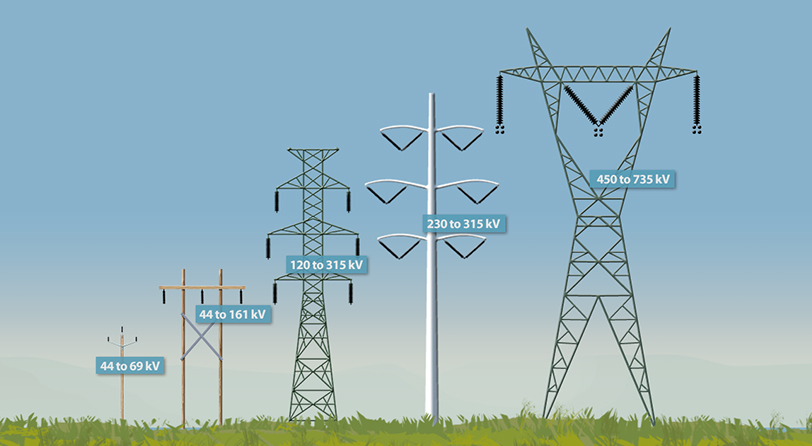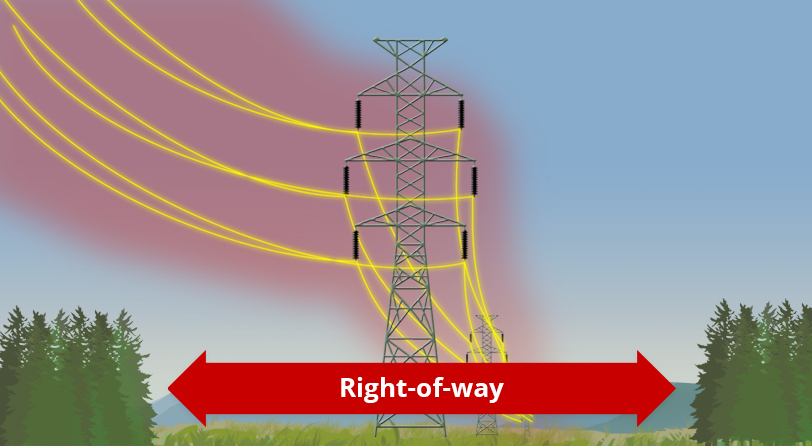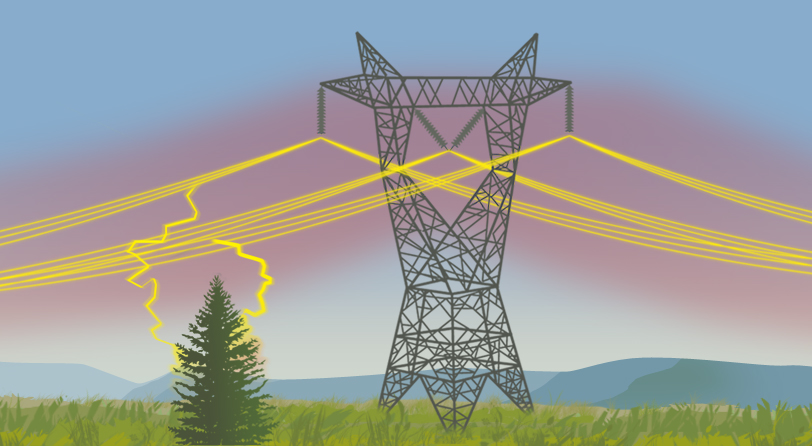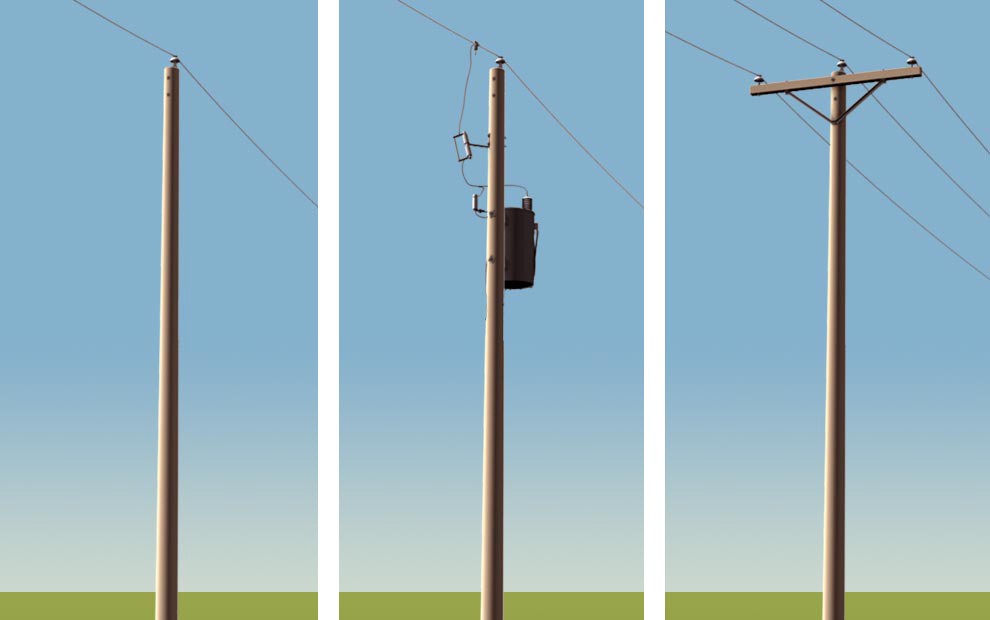
TRANSMISSION lines carry large quantities of electricity from generating stations to the cities and villages where the electricity is used. The electricity is then transformed by substations so that it can be distributed to customers via distribution lines (held up by the poles that run along the streets of cities and villages).
Transmission line voltages vary from 44,000 to over 765,000 volts. The higher the voltage, the more electricity the line can carry.
WARNING :
Climbing up a transmission line pole or tower is strictly forbidden: your very life is at stake.
Why is there a cleared corridor beneath lines?
It’s a matter of safety and service reliability. This corridor—called a right-of-way—maintains a safe distance between the lines and the surrounding vegetation.
The right-of-way also provides Hydro-Québec’s personnel and subcontractors faster access to the lines for inspections, maintenance and repairs.


Why must a safe distance be maintained?
Because they carry large quantities of electricity at a very high voltage, transmission lines are not covered by an insulating sheath. The air around them provides insulation. Therefore, it’s important that nothing come close enough to the lines to cause an electric arc. An arc can start a fire and cause a serious outage. At the voltages used for power transmission, a tree doesn’t need to even touch the line to create an electric arc.
A right-of-way prevents accidents and fires by making sure that vegetation does not come too close to the lines. In fact, the higher the voltage of the line, the greater the clearance required to insulate it… and the wider the right-of-way.
Video: Why vegetation must be kept away from power lines
This video explains why a corridor is cleared beneath transmission lines and what type of work Hydro-Québec does to make sure transmission line rights-of-way are always clear.

Concerned about wires supported by shorter wood poles?
You’re probably dealing with a distribution line.
Overhead distribution lines consist of wires that are supported by utility poles about 10 m (30 ft.) high. These poles are most often made of wood but are sometimes concrete.
The wires at the top of the poles are medium-voltage conductors, which carry 750 to 34,500 volts. These bare metal wires are not insulated. Medium-voltage lines come in several possible configurations. While there are usually three separate wires, there may be up to six. There may even be a single wire, but don’t be fooled: it’s just as dangerous!